Of course, London is known for its rich history and heritage. Visit famous London’s Landmarks like Buckingham Palace, Big Ben and the Houses of Parliament all in one trip! And there are things to see and do for all tastes, from free London’s museums and art galleries to parks and city farms.
Learning interesting facts about London before visiting will make your visit much more enjoyable. You’ll be rewarded with a deeper understanding of the city and how it has evolved over time, as well as a greater appreciation for some of the most famous sights in London. London is 3rd on the list of the most visited cities in the world.
But London this most important European Capital Cities is also one of the world’s most culturally diverse cities, with over 300 languages spoken and many different races living together. With all its rich diversity of culture, no matter where you come from, you can find people who share your traditions of food, music, arts, history, or language – whatever they might be!
Here are 47 fascinating facts about London the UK’s capital.
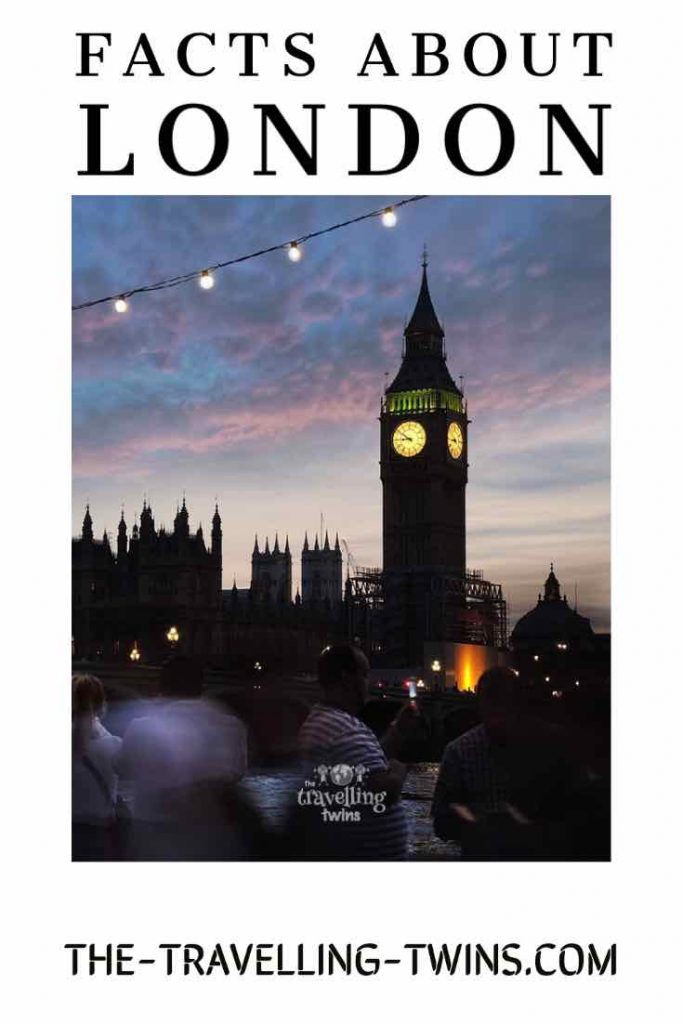
Smallest and Largest City in the UK
London City covers approximately 1.2 square miles and has roughly 7500 people, making it the smallest city in the UK. The Greater London area, on the contrary, covers 1,569 square kilometres.
Facts about London’s population
As of 2021 London has a population of 9,002,488 people. Over 12% UK’s population live in London.
London relies heavily on immigrants as an engine of economic growth, constantly changing its cultural makeup. It is also home to at least 360 languages and over 200 spoken dialects – making it the most culturally diverse city in the world!
Facts about London’s name
There are different stories about the derivation of London’s name. Some say it comes from the Old English word ‘Londontir’, which means ‘tidal work’. The city site, spanning the River Thames – the second longest river in the UK, which is undoubtedly tidal, and remains so today, made it a regional trading hub.
Another possibility is that the name comes from the Celtic word ‘Llyn’, meaning lake. The Thames River frequently flooded back then, so it would look like a lake on those occasions.
The Romans named it Londinium and founded it as their first British stronghold in 43 AD. As well as its position as a trading hub, they established it as an essential military base to keep other foreign invaders out of Britain.
London’s nicknames
London is a city that has been filled with nicknames and new names for centuries. From the Romans to the British, Londoners have always had a way of naming their home to suit them. The most common nicknames are Big Smoke, Londinium, Old Smokey or just plain old London Town.
The Big Smoke
London has been called this because of the fogs due to industrial pollution common during Victorian times. The fogs were so thick that they became known as “Pea Soupers”, providing gothic backdrops to Jeckyl and Hyde and Sherlock Holmes stories. Even as recently as 1952, London “smogs” (smoke and fog) caused by a combination of air pollution and freak atmospheric conditions are believed to have killed 10,000 Londoners in one winter.
The Square Mile
The Square Mile is a small area of London, forming London’s historical nucleus. The name comes, of course, from its shape, based on the Roman city. Today, the square mile in London’s financial centre containing both St Paul’s Cathedral and several iconic glass and steel skyscrapers.
The City That Never Sleeps
This term became popular in the 1950s for New York. But it transferred to London, which shares the characteristics of 24-hour business, culture and entertainment.
London has over 170 museums
London has over 170 museums, from the British Museum – one of the largest museums in the world or Imperial War Museum to the small Fan Museum in Greenwich. Most of the London museums are free to enter which makes a great addition to sightseeing.
Bridges in London
There are 34 bridges in Greater London.
Tower Bridge Facts
Tower Bridge is the most famous bridge in London. Tower Bridge is a famous landmark in London and was one of the first bridges built over the Thames. It crosses the river from the south end of the City, Tower Hill on the bankside nearest The Monument to the north side near Horseferry Road.
Tower Bridge provides an iconic view that people would associate with London for centuries – before it existed! Initially proposed by engineer Horace Jones as part of George Lansbury’s 1877 bill, many different designs were put forward, including models made out of iron rails and wire cables. Still, they all proved too costly or complicated, so John Wolfe Barry came up with his design that won approval because he managed to meet safety standards and keep costs down while keeping construction time at four years.
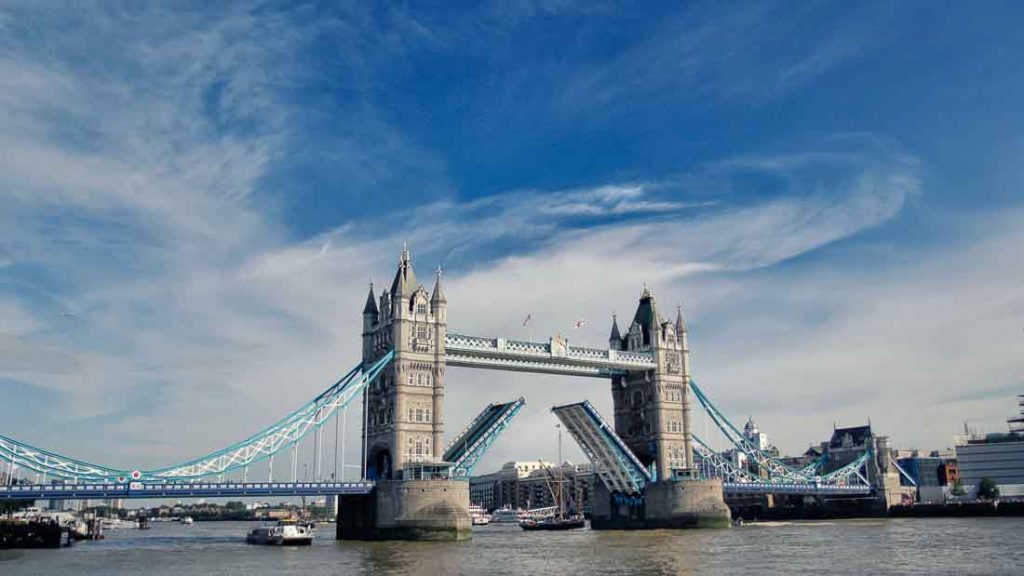
London Bridge is not in London
London Bridge is not in London it was bought by American tycoon Robert McCulloch in 1967 he then took it and rebuilt it in Arizona, where there is now a theme park around it.
London’s Parks
London’s parks are one of the treasures of the city. The parks offer a sense of tranquillity to those who visit them and are often places where children can feel safe while they play. The largest parks in London include Hampstead Heath Park, St. James’s Park, Lancaster Gate, Hyde Park, Holland Park, and Clapham Common. London’s parks also provide opportunities for people to exercise by either walking or running.
The entire city has many wonderful parks, but one of the most notable is Hyde Park. In fact, it’s so large that it takes up hundreds of acres in London but still isn’t the largest park in town.
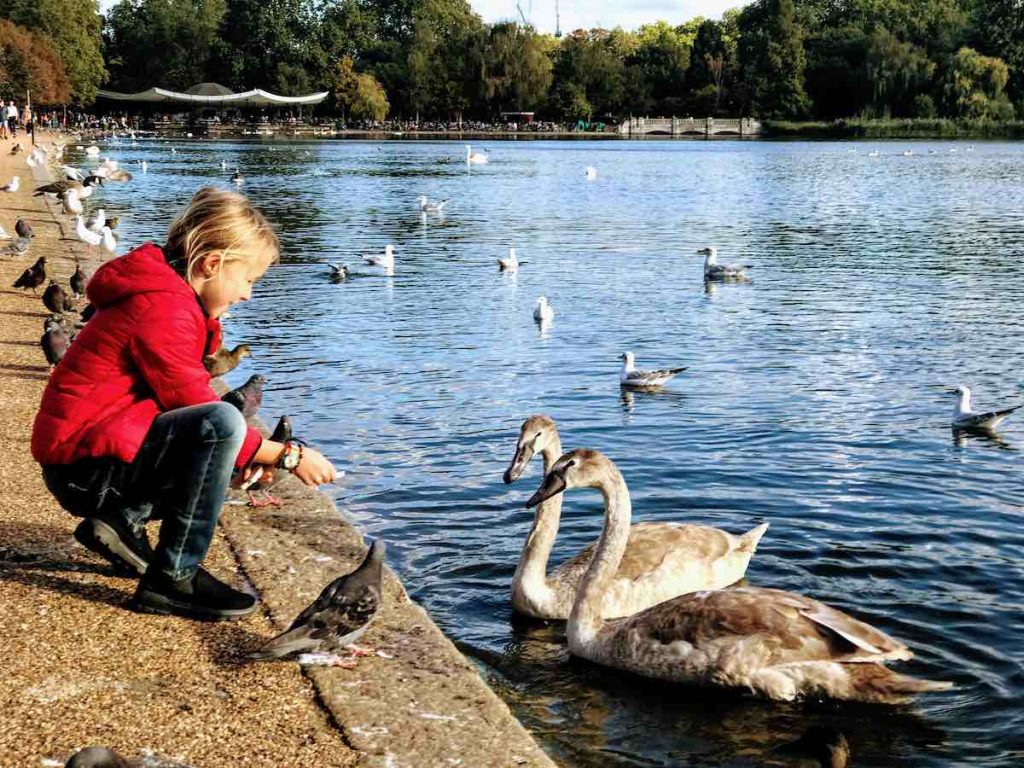
London isn’t as wet and miserable as you might think.
London is dryer than the global average, with an average annual rainfall of 583.6 mm. It sees less rainfall than Bordeaux, Lisbon, Naples, New York City, Rome and Tokyo. London is infamous as the weather is always rainy on its outskirts.
Important facts in the history of London
Tower of London
One of the most important events in London’s history was the construction of the Tower of London. Built by the Norman invader, William the Conqueror, in 1078 as his defensive castle, it is a popular tourist attraction with over 2 million visitors every year. It is famous for its landmark White Tower, once a residence for monarchs but more infamously as a site of torture and executions.
The Tower still houses the Crown Jewels, including Elizabeth II’s coronation crown and sceptre and other priceless works. Many of these were sourced from the farthest parts of the world during the British Empire.
The Tower has been used as a palace, a military base, a mint, a prison, a menagerie, and the Royal Armoury and its one of the most recognizable landmarks in London.
Since times of Charles II, six ravens protect the Tower of London, apparently, their wings are clipped to prevent them from flying away.
Bubonic plague
The Black Death, or Bubonic plague, was a disease that killed around 15% of London’s population. The symptoms include fever and chills followed by buboes in which fluid builds up under the skin near lymph nodes on chest and stomach areas caused by an infection from bacteria called Yersinia pestis.
The black death is one of the worst pandemics to have ever hit humanity-killing more than 50 million Europeans over a few years’ spans! It had terrible consequences like millions dying within weeks as well as extreme cases where entire families perished all together leaving behind no survivors whatsoever. And just
Great Fire of London
A critical event in London’s history was the Great Fire of 1666. The fire started in a bakery and quickly spread, wiping out a large part of the city. The fire caused such destruction that it took years to rebuild; however, there were some positive changes. For example, since the fire had destroyed so many timber-framed buildings, new laws were introduced to require more fireproof stone and brick construction.
How do you know if the Queen is in Buckingham Palace?
Until 1997, the Royal Standard was flown from Buckingham Palace whenever the monarch was in residence, and no flag flew when he or she was away. In response to public pressure for royal acknowledgement of the death of Diana, Princess of Wales, in 1997, when the Queen was in Scotland, the Union Flag of the United Kingdom was flown at half-mast from Buckingham Palace for the first time. The new tradition of flying the Union Flag at half-mast during times of public mourning has continued since then.
The Royal Standard is still flown to show when the Queen is in residence, but never at half-mast. However, sometimes at times of national celebration, for example, for Prince William’s wedding, a much larger Royal Standard is flown.
Big Ben is not the name for the Tower
Big Ben is a nickname for the clock in the towers. The Tower in the northern end of the Palace of Westminster in London sits. The object is now known as Elizabeth Tower, but historically it was known as the Clock Tower. Now everyone refers to it Big Ben
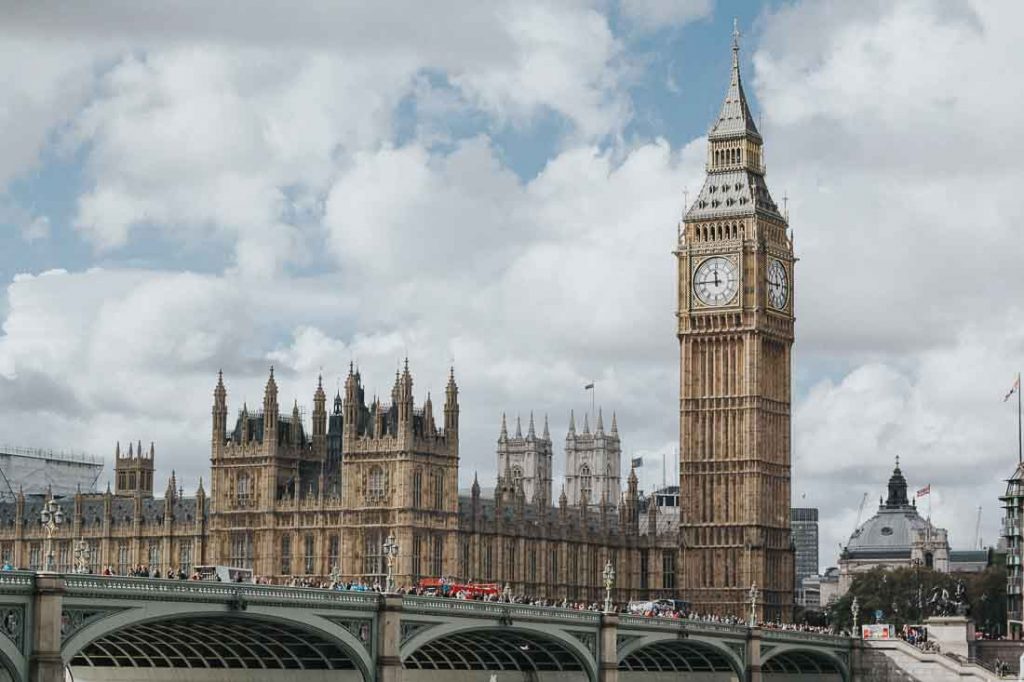
London Zoo
The London Zoo is a zoo founded in 1826. It is the oldest scientific zoo in the world and was originally owned by the Zoological Society of London. Nowadays the zoo is an educational charity that has been run by different organizations.
London Zoo is one of the best Zoos in the world we have visited and the best things to do in London with kids.
Please mind the gap – Facts about London Underground
The London Underground is an extensive transport system consisting of 11 lines serving 270 stations in the city. It serves millions of passengers every day and is based on a hierarchical hub-and-spoke network.
The London Underground is the oldest in the world. Constructed in 1863, the Tube now serves 1.265 billion people every day in the world. Ironically nearly half the London underground network is located overground. When the project had been suggested, its intended use was to fill a tunnel with water so passengers could get the barges from station to station. Other proposals included horses carrying people in darkness, and eventually, they decided on railway steam. Maybe that’s why most Londoners call it the bathtub instead of the UndergroundUnderground because of their use by millions of people.
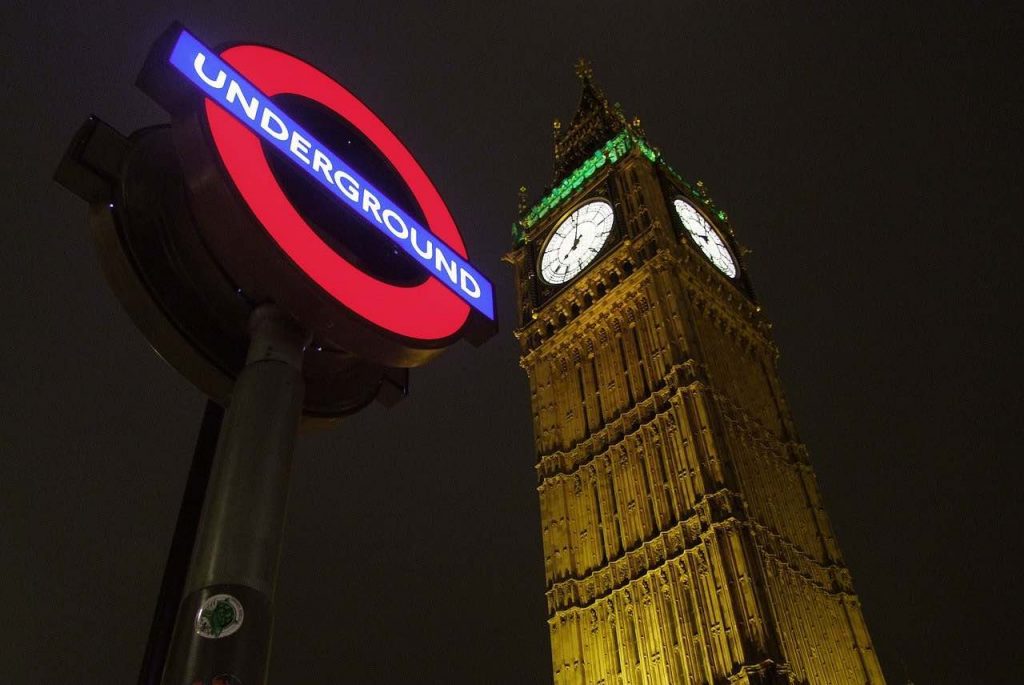
London’s Underground Stations
Five underground stations were named after nearby pubs: Elephant & Castle, Manor House, The Royal Oak, The Angel,
The people who helped to construct the first Underground line were mostly Irish immigrants. The tunnels they built are still in use today as one of London’s major travel routes.
The UndergroundUnderground, also known as the Tube, is a 280-mile-long railway system that serves the city of London and the surrounding areas. It consists of 11 lines with 270 stations and in 2012 had over 1 billion passengers. One of the most famous sections in the UndergroundUnderground is called “the Tube”, which is made up of five lines that run underground through all parts of London. This section was
The first concepts for the underground were pretty bizarre.
Ideas for underground rivers include a system of underground rivers for commuter ferry vessels to float between pre-described stops. Sounds much quieter when compared to Central Station during rush hour.
A special breed of mosquito has evolved to live in the wild.
Culex Pipiens Molestus is a subspecies of mosquitoes living at the London Underground. It can live long days in darkness, does not need hibernation and is a voracious biter. It doesn’t even need water for eggs, and it doesn’t need water for them.
Black cabs in London
Black cabs in London are not just a means of transportation, but also an experience. The drivers often chat with passengers to make them feel at ease and they’re always friendly no matter what time you hail one or where the destination is.
There are 21000 black cabs driving around London, but there are some in other colors as well. in 2002 in the year of Queen Jubilee 50 golden cabs were produced.
How do I become a black cab driver?
In most countries, it is only necessary a driving license to take cabs. That’s clearly not true for London. Black Cab drivers who appear in most parts of town have formally undertaken a long apprenticeship before getting the job. Typically training may last two to four years, and candidates need to memorize everything in London. In addition, they must also be able to apply quickly based on which means to which it’s the last time from one destination to the next. You could understand what makes them so expensive.
London buses were not always red
London General Omnibus Company painted its red bus in 1907 to differentiate its buses from the competitors. The colour used for buses is Pantone 485 C Red. It was chosen because it is eye-catching. The same colour is used for Red Telephone booths as well as for Royal Mail and London Underground.
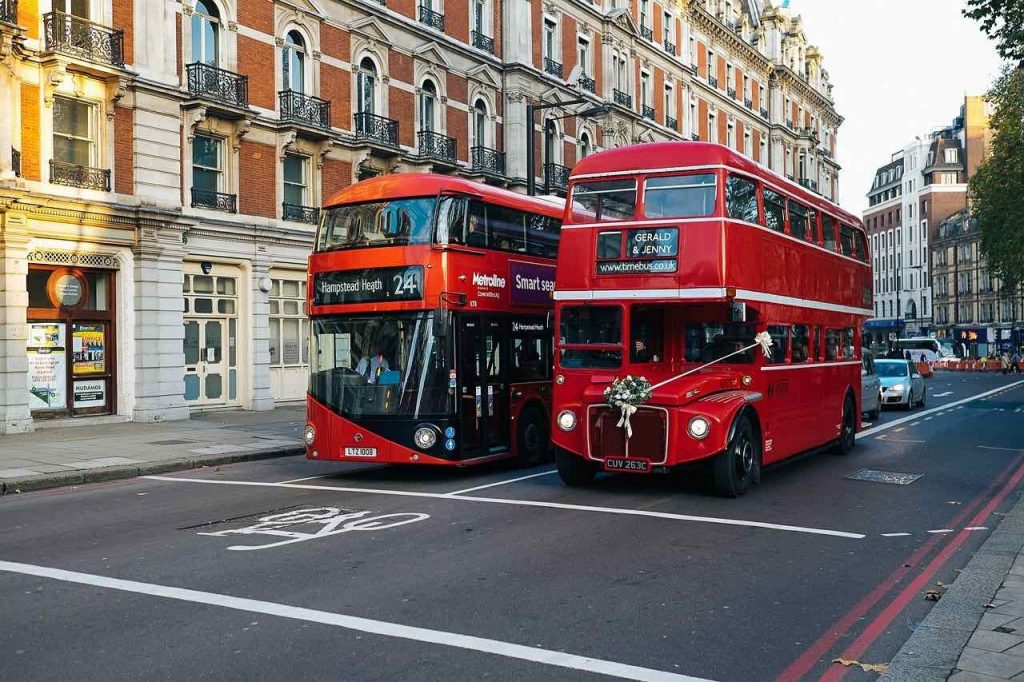
London has hosted the Olympics three times.
London has hosted the Olympics three times in 1908, 1948 and 2012. In 1908 the Olympics were a huge 187 days long – a record for the events’ history. London is the only city which hosted Olympics three times.
London University was the first university in Britain to allow women to study.
London University was the first in British society to offer degrees to women in 1878. London has always been an arithmetic rather progressive place on many things, including the use of mind by women. Check out these nice city quotes from the city Quotes list.
Land of Indian restaurants
In London, the Indian population makes up 6.6% of the population. London houses more than 10,000 Indian restaurants – more than Mumbai. From Indian Quickies to fine dining restaurants, London offers the best Indian food on the planet.
London currently has a record-breaking mayor.
Sadiq is the first Muslim mayor of a euro area capital. He won the most votes of any politician in British history. Son of an immigrant bus driver and seamstress. Khan was of eight sons.
Fun facts about London
In 1814 a tide wave of beer was unleashed
A vat of beer from M&L Brewery Company brewery exploded explodes, throwing an immense tsunami of beer on Tottenham Court Road and the surrounding streets. Of eight people killed five attended a wake. London’s brewery flood makes you think a few times. What started out as the bursting of a beer vat was in a Meaux and Company brewery at the Meaux brewery in London.
London had a Gin Craze and it was… Crazy.
London was in a time of Gin Craze between 1720 and 1751. In the era of the gin boom, the average consumption was 2 cups a week on average per person for any individual in the city including children. The craze began when Parliament deregulated the distillery industry to deal with the surplus from corn. It ended when laws aimed at restricting the distilling and selling of alcohol arose. After a series of restrictions on the distillation of London’s gin was finally overturned in 1751.
London has the smallest statue
The statue of two tiny mice eating cheese is dedicated to two builders who died following an argument with the construction group in connection to the building. The men blamed each other for the accident, which in part caused the rodents to have mice infest the ground. The statue is located in Philpot Lane London, which is located in the heart of the best-known landmarks of its city, the Monuments.
Feeding pigeons in Trafalgar Square is banned
The city’s mayor was banned from delivering and selling food near Trafalgar Square as of 2003. Even they’ve gone so far as to use a hawk to prevent them – an act they turned out as successful. The Plaza was once renowned to tourists for storing and feeding thousands of feral pigeons.
Cock Lane
Street names in London come from different professions which had their workshops or from markets which were held there like Cornhill, Fish street, Poultry Street. So where from Cock Lane got its name? In medical times it was the only street in London where prostitution was allowed.
Interesting London Facts – Summary
London is the largest city in England, and one of the most important Capital Cities on Earth. Here are some interesting facts about this truly fascinating place that you may not have known before!
London’s Facts – Pin it



Privacy Policy Disclaimer
This website uses affiliate links for income and support.
If you like our website, please consider using these links. You will be directed to the vendor, and we will get a small commission on your purchase price at no increased cost to you.
We have researched facts stated here as far as practicable but please check anything critical before committing your time and money. We do not claim any special knowledge or expertise, and we are not consultants for our readers.